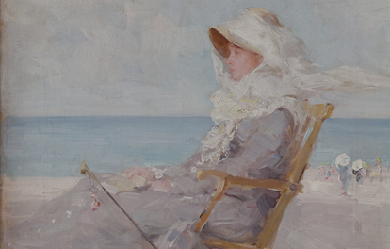
Info
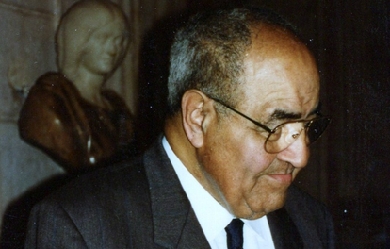
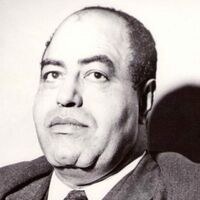
Gastón Baquero (Banes, Cuba, 4 de mayo de 1914 - Madrid, 15 de mayo de 1997) fue un importante escritor y poeta cubano del siglo XX, que después de la revolución cubana vivió exiliado en España. Baquero nació en Banes, pueblo perteneciente a la antigua provincia de Oriente, zona que hoy es parte de la provincia de Holguín. Estudió Agronomía, pero nunca ejerció la profesión: prefirió consagrarse a las actividades literarias y periodísticas.
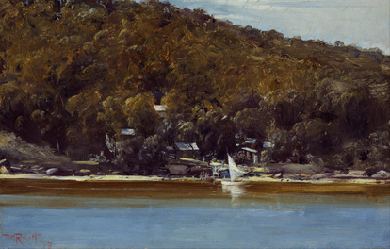
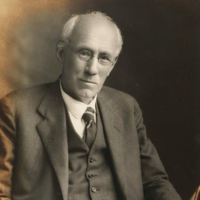
John Le Gay Brereton (2 September 1871– 2 February 1933) was an Australian poet, critic and professor of English at the University of Sydney. He was the first president of the Fellowship of Australian Writers when it was formed in Sydney in 1928. Brereton was born in Sydney, the fifth son of John Le Gay Brereton (1827-1886), a well-known Sydney physician who published five volumes of verse between 1857 and 1887, and his wife Mary, née Tongue. The younger Brereton was educated at Sydney Grammar School from 1881 and the University of Sydney where he graduated BA (1894), reading English under Professor Sir Mungo MacCallum. He was editor of Hermes, the student literary annual, and became the university’s chief librarian in 1915.
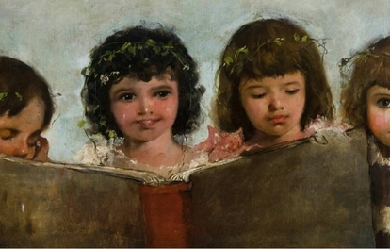
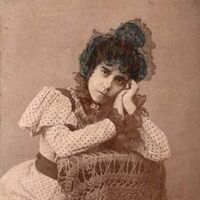
¿Queréis sondear la noche de mi espíritu? Allá en el fondo oscuro de mi alma hay un lugar donde jamás penetra la clara luz de la esperanza. Pero no me preguntes lo que duerme bajo el sudario de la sombra muda... ¡Detente allí, junto al abismo y llora como se llora al borde de las tumbas! Juana Borrero (La Habana, Cuba, 18 de mayo de 1877 - Cayo Hueso, Florida, 9 de marzo de 1896) fue una poetisa modernista y ocasional pintora cubana, nacida en el reparto Santos Suárez n. 15, en La Habana, Cuba. También se destacó en la pintura. Aunque es poca su producción pictórica, forma parte importante de la etapa del academicismo en la pintura cubana. Los Pilluelos y Las Niñas están expuestos en el Museo Nacional de Bellas Artes de Cuba. También son muy conocidos otros dos óleos; Doña Crucesita y el Señor de la tabaquera.

I love to read and write. I am in 6th grade so I'm really very young. I've always loved to write and when I found this website I thought I could let my inner feelings show a little more. Facts About Myself: -I like anime. (Hetalia specifically.) -I love the colors Royal Blue and Lavender. -I'm more of a back-crowd person as I put it. -I come off as very intimidating for my age so I don't have many friends. -I do ballet and soccer. That's all I'm giving out about myself so goodbye!!! ~^_^~
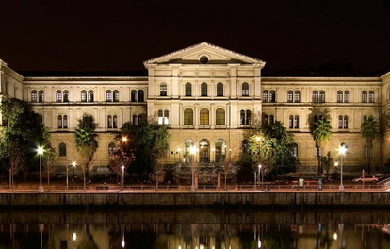
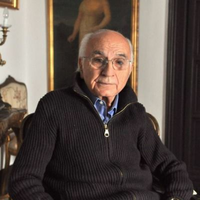
Francisco Brines Bañó (Oliva, Valencia, 1932) es un poeta español. Pertenece al grupo poético de los años 50 o Generación del 50, junto a Claudio Rodríguez, Jaime Gil de Biedma y Ángel González Biografía Estudió derecho en la Universidad de Deusto, Valencia y Salamanca, y cursó estudios de Filosofía y Letras en Madrid. Está considerado uno de los poetas actuales de más hondo acento elegíaco. Pertenece a la segunda generación de la posguerra, y junto a Claudio Rodríguez y José Ángel Valente, entre otros, perteneció al grupo conocido como Generación del 50, si bien, a diferencia de la mayoría de los poetas del 50 o del medio siglo, nunca cultivó la poesía social (de la que hay rastros, sin embargo, en su libro El santo inocente, luego llamado Materia narrativa inexacta). Fue profesor de español en la Universidad de Oxford, y en 1988 revisó y adaptó el texto de [El alcalde de Zalamea], versión que fue estrenada en noviembre del mismo año por la Compañía de Teatro Clásico, y dirigida por José Luis Alonso. En el año 2001 fue nombrado miembro de la Real Academia Española, para ocupar el sillón X, vacante tras el fallecimiento del dramaturgo Antonio Buero Vallejo. Tomó posesión el 21 de mayo de 2006. Su obra poética, en la que se percibe una evidente influencia de Luis Cernuda, se caracteriza por un tono intimista y por la constante reflexión sobre el paso del tiempo. En su escritura, la infancia aparece como un tiempo mítico, que desconoce la muerte, ligado al espacio de Elca, la casa de la niñez en Oliva. El adulto ha sido expulsado definitivamente del paraíso de la infancia y sólo en algunos momentos (a través del erotismo, de la contemplación de la naturaleza...) el ser humano recupera la plenitud vital experimentada en la niñez y en la juventud. Por todo ello, la memoria desempeña un papel fundamental en su escritura, si bien en sus poemas se deja traslucir la convicción de que ni la poesía ni el recuerdo permiten detener el paso del tiempo y salvar los momentos de plenitud del pasado. En El otoño de las rosas, su libro más valorado por la crítica, se funden el lamento elegiaco y la exaltación vital. El tema del amor homosexual aparece recurrentemente en sus poemas, siempre con naturalidad. Según Ariadna G. García: Se reitera en la obra de Brines esta búsqueda incesante de la Pureza, en un intento por ennoblecer, moralmente, la homosexualidad. Su escritura, que tiende a un equilibrio clásico y a un tono melancólico, que intenta dominar la angustia ante la muerte mediante una asunción serena de lo inevitable, se nutre no sólo de la influencia de su admirado Luis Cernuda sino también, y en especial, en su primer libro, Las brasas, de la poesía de Juan Ramón Jiménez y del Antonio Machado más intimista. En su libro Aún no, se acerca a la poesía satírica, una línea que el poeta apenas ha cultivado posteriormente. Son muchos los poetas de las últimas generaciones que se interesan en la poesía de Brines, desde "novísimos" como Jaime Siles o Luis Antonio de Villena hasta poetas de ahora mismo. Obra poética * Las brasas (1960). Premio Adonais * El santo inocente (1965) * Palabras a la oscuridad (1966). Premio de la Crítica * Aún no (1971) * Insistencias en Luzbel (1977) * El otoño de las rosas (1986). Premio Nacional de Literatura * La última costa (1995). Premio Fastenrath de la Real Academia Española Antologías * Ensayo de una despedida. Poesía 1960-1971 (1974) * Poesía. 1960-1981 (1984) * Selección propia, Madrid, Cátedra, 1984 * Poemas excluidos (1985) * La rosa de las noches (1986) * Poemas a D. K. (1986) * El rumor del tiempo, Barcelona, Anagrama, 1989 * Espejo ciego, Generalitat Valenciana, 1993 * Breve antología personal (1997) * Francisco Brines, poesía, Universitat de Lleida, 1997 * Selección de poemas (1997) * Poesía completa (1960-1997) (1997) * Antología poética (1998) * La Iluminada Rosa Negra (2003) * Amada vida mía (2004) * Antología poética, Madrid, Espasa-Calpe, 2006 * Todos los rostros del pasado, Barcelona, Círculo, 2007 * Para quemar la noche, Madrid, Patrimonio Nacional, 2010 * Yo descanso en la luz, Madrid, Visor, 2010 Otras obras * Escritos sobre poesía española contemporánea, Valencia, Pre-Textos, 1994. * "Carmen Calvo", Caja de Ahorros de Asturias, 1999 * 2002 Luis Cernuda, Ocnos. Edición literaria de Francisco Brines. Unidad y cercanía personal en la poesía de Luis Cernuda: discurso de ingreso en la Real Academia Española, contestado por Francisco Nieva, Sevilla, Renacimiento, 2006. * 2010 ELCA. Libro de artista conjunto con Mariona Brines. Valencia, Editorial Krausse. Algunos galardones recibidos * 2010 Premio Reina Sofía de Poesía Iberoamericana. * 2007 IV Premio de Poesía Federico García Lorca * 2004 Premio a la Creatividad 'Ricardo Marín' * 1999 Premio Nacional de las Letras Españolas. * 1998 Premio Fastenrath. * 1987 Premio Nacional de Literatura. * 1967 Premio de las Letras Valencianas. * 1967 Premio Nacional de la Crítica * 1960 Premio Adonais Bibliografía sobre su obra * José Andújar Almansa, La palabra y la rosa. Sobre la poesía de Francisco Brines. Alianza, 2003. * Carlos Bousoño, Poesía poscontemporánea. Cuatro estudios y una introducción. Júcar, 1985. * Antonio García Berrio, Empatía. La poesía sentimental de Francisco Brines. Generalitat Valenciana, 2003. * José Luis Gómez Toré, La mirada elegíaca. El espacio y la memoria en la poesía de Francisco Brines. Pre-Textos, 2002. * José Olivio Jiménez, La poesía de Francisco Brines. Renacimiento, 2001. * David Pujante, Belleza mojada. La escritura poética de Francisco Brines. Renacimiento, 2004. Referencias Wikipedia – http://es.wikipedia.org/wiki/Francisco_Brines
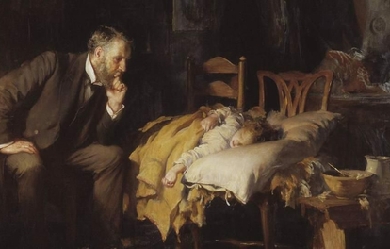
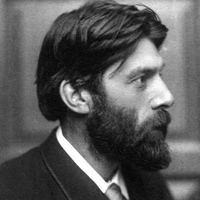
Robert Seymour Bridges, OM (23 October 1844– 21 April 1930) was Britain’s poet laureate from 1913 to 1930. A doctor by training, he achieved literary fame only late in life. His poems reflect a deep Christian faith, and he is the author of many well-known hymns. It was through Bridges’ efforts that Gerard Manley Hopkins achieved posthumous fame. Personal and professional life Bridges was born in Walmer, Kent, in England, and educated at Eton College and Corpus Christi College, Oxford. He went on to study medicine in London at St Bartholomew’s Hospital, intending to practise until the age of forty and then retire to write poetry. He practised as a casualty physician at his teaching hospital (where he made a series of highly critical remarks about the Victorian medical establishment) and subsequently as a full physician to the Great (later Royal) Northern Hospital. He was also a physician to the Hospital for Sick Children. Lung disease forced him to retire in 1882, and from that point on he devoted himself to writing and literary research. However, Bridges’ literary work started long before his retirement, his first collection of poems having been published in 1873. In 1884 he married Monica Waterhouse, daughter of Alfred Waterhouse R.A., and spent the rest of his life in rural seclusion, first at Yattendon, then at Boars Hill, Berkshire, where he died. He was elected to the Fellowship of the Royal College of Physicians of London in 1900. He was appointed Poet Laureate in 1913, the only medical graduate to have held the office. He was the father of poet Elizabeth Daryush. Literary work As a poet Bridges stands rather apart from the current of modern English verse, but his work has had great influence in a select circle, by its restraint, purity, precision and delicacy yet strength of expression. It embodies a distinct theory of prosody. Bridges’ faith underpinned much of his work. In the book Milton’s Prosody, he took an empirical approach to examining Milton’s use of blank verse, and developed the controversial theory that Milton’s practice was essentially syllabic. He considered free verse to be too limiting, and explained his position in the essay “Humdrum and Harum-Scarum”. His own efforts to “free” verse resulted in the poems he called “Neo-Miltonic Syllabics”, which were collected in New Verse (1925). The metre of these poems was based on syllables rather than accents, and he used the principle again in the long philosophical poem The Testament of Beauty (1929), for which he received the Order of Merit. His best-known poems, however, are to be found in the two earlier volumes of Shorter Poems (1890, 1894). He also wrote verse plays, with limited success, and literary criticism, including a study of the work of John Keats. Bridges’ poetry was privately printed in the first instance, and was slow in making its way beyond a comparatively small circle of his admirers. His best work is to be found in his Shorter Poems (1890), and a complete edition (to date) of his Poetical Works (6 vols.) was published in 1898-1905. Despite being made poet laureate in 1913, Bridges was never a very well-known poet and only achieved his great popularity shortly before his death with The Testament of Beauty. However, his verse evoked response in many great British composers of the time. Among those to set his poems to music were Hubert Parry, Gustav Holst and later Gerald Finzi. During the First World War, Bridges joined the group of writers assembled by Charles Masterman as part of Britain’s War Propaganda Bureau at Wellington House. At Oxford, Bridges became friends with Gerard Manley Hopkins, who is now considered a superior poet but who owes his present fame to Bridges’ efforts in arranging the posthumous publication (1918) of his verse. Bridges received advice from the young phonetician David Abercrombie on the reformed spelling system he was devising for the publication of his collected essays (later published in seven volumes by Oxford University Press, with the help of the distinguished typographer Stanley Morison, who designed the new letters). Thus Robert Bridges contributed to phonetics and he was also a founder member of the Society for Pure English. Hymnody Bridges made an important contribution to hymnody with the publication in 1899 of his Yattendon Hymnal, which he created specifically for musical reasons. This collection of hymns, although not a financial success, became a bridge between the Victorian hymnody of the last half of the 19th century and the modern hymnody of the early 20th century. Bridges wrote and also translated historic hymns, and many of these were included in Songs of Syon (1904) and the later English Hymnal (1906). Several of Bridges’ hymns and translations are still in use today: “Thee will I love, my God and King” “Happy are they that love God” “Rejoice, O land, in God thy might” The Baptist Hymn Book, University Press, Oxford 1962 “Ah, Holy Jesus” (Johann Heermann, 1630) “All My Hope on God Is Founded” (Joachim Neander, c. 1680) “Jesu, Joy of Man’s Desiring” (Martin Jahn, 1661) “O Gladsome Light” (Phos Hilaron) “O Sacred Head, sore wounded” (Paulus Gerhardt, 1656) “O Splendour of God’s Glory Bright” (Ambrose, 4th century) “When morning gilds the skies” (stanza 3; Katholisches Gesangbuch, 1744) Major works * Dates given are of first publication and significant revisions. Poetry collections * The Growth of Love (1876; 1889; 1898), a sequence of (24; 79; 69) sonnets * Prometheus the Firegiver: A Mask in the Greek Manner (1883) * Eros and Psyche: A Narrative Poem in Twelve Measures (1885; 1894), a story from the Latin of Apuleius * Shorter Poems, Books I–IV (1890) * Shorter Poems, Books I–V (1894) * New Poems (1899) * Demeter: A Mask (1905), performed 1904 * Ibant Obscuri: An Experiment in the Classical Hexameter (1916), with reprint of summary of Stone’s Prosody, accompanied by 'later observations & modifications’ * October and Other Poems (1920) * The Tapestry: Poems (1925), in neo-Miltonic syllabics * New Verse (1926), includes verse of The Tapestry * The Testament of Beauty (1929) Verse drama * Nero (1885), an historical tragedy; called The First Part of Nero subsequent to the publication of Nero: Part II * The Feast of Bacchus (1889); partly translated from the Heauton-Timoroumenos of Terence * Achilles in Scyros (1890), a drama in a mixed manner * Palicio (1890), a romantic drama in five acts in the Elizabethan manner * The Return of Ulysses (1890), a drama in five acts in a mixed manner * The Christian Captives (1890), a tragedy in five acts in a mixed manner; on the same subject as Calderón’s El Principe Constante * The Humours of the Court (1893), a comedy in three acts; founded on Calderón’s El secreto á voces and on Lope de Vega’s El Perro del hortelano * Nero, Part II (1894) Prose * Milton’s Prosody, With a Chapter on Accentual Verse (1893; 1901; 1921), based on essays published in 1887 and 1889 * Keats (1895) * Hymns from the Yattendon Hymnal (1899) * The Spirit of Man (1916) * Poems of Gerard Manley Hopkins (1918), edited with notes by R.B. * The Necessity of Poetry (1918) * Collected Essays, Papers, Etc. (1927–36) References Wikipedia—https://en.wikipedia.org/wiki/Robert_Bridges

i live in my mind,dance to my heart beat,a fairytale castle rooted within my soul. Ive always loved art,started painting at the age of 11 and started writing by the age of 14. i write about the journey of my life,my experiences and the influences of the environment around me.my poetry UN-folds spiritual experiences,it is a reflection of being loyal and true to your self as a person. i honor my worth and through my poetry i aim to heal,touch and groom the hearts that i can reach. my poetry simply says you're never alone in a situation.
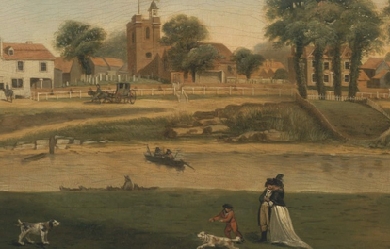
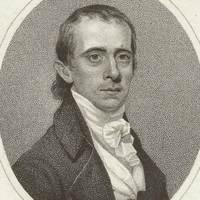
Robert Bloomfield (3 December 1766– 19 August 1823) was an English labouring class poet whose work is appreciated in the context of other self-educated writers such as Stephen Duck, Mary Collier and John Clare. Life Robert Bloomfield was born of a poor family in the village of Honington, Suffolk. His father was a tailor and died of smallpox when the son was a year old. It was from his mother Elizabeth, who kept the village school, that he received the rudiments of education. Apprenticed at the age of eleven to his mother’s brother-in-law, he worked on a farm which was part of the estate of the Duke of Grafton, his future patron. Four years later, owing to his small and weak stature (in adulthood Bloomfield was just five feet tall) he was sent to London to work as a shoemaker under his elder brother George. One of his early duties was to read the papers aloud while the others in the workshop were working and he became particularly interested in the poetry section of The London Magazine. He had his first poem, “The Village Girl”, published in 1786. When his brother George returned to Suffolk in that year, he set up on his own as a cobbler and in 1790 married Mary Ann Church, by whom he was to have five children. The poem that made his reputation, The Farmer’s Boy, was composed in a garret in Bell Alley, Coleman Street. It was influenced by James Thomson’s poem The Seasons. Bloomfield was able to carry some fifty to a hundred finished lines of it in his head at a time until there was opportunity to write them down. The manuscript was declined by several publishers and was eventually shown by his brother George to Capel Lofft, a radical Suffolk squire of literary tastes, who arranged for its publication with woodcuts by Thomas Bewick in 1800. The success of the poem was remarkable, over 25,000 copies being sold in the next two years. Also reprinted in several American editions, it appeared in German translation in Leipzig, translated into French as Le Valet du Fermier in Paris, and in Italian translation in Milan; there was even a Latin translation of parts of it, De Agricolae Puero, Anglicano Poemate celeberrimo excerptum, et in morem Latini Georgice redditum, by the lively Suffolk vicar William Clubbe. The poem was particularly admired by the Suffolk-born painter John Constable who used couplets from it as tags to two paintings: a 'Ploughing Scene’ (shown at the Royal Academy in 1814) and 'A Harvest Field, Reapers, Gleaners’ (shown at the British Institution in 1817), which he noted as deriving from 'Bloomfield’s poem’. It was also admired by Robert Southey, a Romantic poet and future poet laureate. While this success helped reduce his poverty for a while, it also took him away from his work. As a result, the Duke of Grafton, who lived at Euston Hall near the village of Bloomfield’s birth, settled on him a small annuity of £15 and used his influence to gain him employment in the Seal Office to the King’s Bench Court and then at Somerset House, but he worked in neither for long. Meanwhile, Bloomfield’s reputation was increased by the appearance of his Rural Tales (1802), several poems of which were set to music by his brother Isaac. Another of them, “The Miller’s Maid”, was made an opera by John Davy (1763–1824) in 1804 and formed the basis for a two-act melodrama by John Faucit Saville (1807–1855) in 1821. Other publications by Bloomfield included Good Tidings (written in praise of inoculation at the instigation of Edward Jenner, 1804); Wild Flowers or Pastoral and Local Poetry (1806); and The Banks of the Wye (the poetic journal of a walking tour in the footsteps of Wordsworth, 1811). Unfortunately Vernor and Hood, his publishers, went bankrupt and in 1812 Bloomfield was forced to move from London into a cottage rented to him by a friend in the Bedfordshire village of Shefford. There one of his daughters died in 1814 and his wife became insane. In order to support himself he tried to carry on business as a bookseller but failed, and in his later years was reduced to making Aeolian harps which he sold among his friends. With failing eyesight, his own reason threatened by depression, he died in great poverty on 19 August 1823. In order to pay his debts and cover the funeral expenses, his collection of books and manuscripts, and his household effects, had to be auctioned. Allied to this fund-raising was the publication that year of his drama, Hazlewood Hall, and in the following year of The Remains of Robert Bloomfield, which included writing for children on which he had been working for some years and a selection of his correspondence. Poetry Bloomfield’s poetry invites comparison with that of George Crabbe, who was also a native of Suffolk. Both wrote much in iambic pentameter couplets, both provide descriptions of rural life in its hardest and least inviting forms. Bloomfield, however, is more cheerful in tone and his verse is denser and more vigorous. Here, for instance, is the episode in “The Farmer’s Boy” where Giles chops up turnips to feed the livestock in winter: On GILES, and such as Giles, the labour falls, To strew the frequent load where hunger calls. On driving gales sharp hail indignant flies, And sleet, more irksome still, assails his eyes; Snow clogs his feet; or if no snow is seen, The field with all its juicy store to screen, Deep goes the frost, till every root is found A rolling mass of ice upon the ground. No tender ewe can break her nightly fast, Nor heifer strong begin the cold repast, Till Giles with pond’rous beetle foremost go, And scatt’ring splinters fly at every blow; When pressing round him, eager for the prize, From their mixt breath warm exhalations rise. However, such verse is little varied from that of many of Bloomfield’s contemporaries, such as James Montgomery and Ebenezer Elliot whose names, like his, were well known in their time but are scarcely remembered now. Besides such formal productions, he told many light-hearted stories in octosyllabics, some of which are interesting for their employment of Suffolk dialect words, particularly in “The Horkey”. His work served as an inspiration to John Clare, who began publishing his own rural poetry in 1820 and praised Bloomfield’s highly. Robert’s brother, Nathaniel, also published a collection of poetry in 1803, An Essay on War, in Blank Verse, and Other Poems. Byron commented on the brothers in English Bards and Scotch Reviewers (lines 775-86), linking Robert’s name favourably with other poets of humble beginnings such as Burns and Gifford but dismissing Nathaniel’s writing as routine and uninspired. Byron returned to the charge in Hints from Horace with the apostrophe Hark to those lines, narcotically soft, The cobbler-laureats sing to Capel Lofft! (lines 733-4) Although a note makes it clear than Nathaniel is his principal target, he also seems to include 'his brother Bobby’ in the accusation that Lofft 'has spoiled some excellent shoemakers and been accessory to the poetic undoing of many of the industrious poor’. Later Reputation In 1973 Shefford’s secondary school was converted to a middle school (for pupils aged 9–13) and named after the poet. In 2000 the Robert Bloomfield Society was founded to promote awareness of his life and work and has encouraged scholarly publications relating to him. A revised and enlarged selection of his poems was published by Trent Editions in 2007. Recent studies of his poetry evaluate it within its social as well as its literary context. References Wikipedia—https://en.wikipedia.org/wiki/Robert_Bloomfield
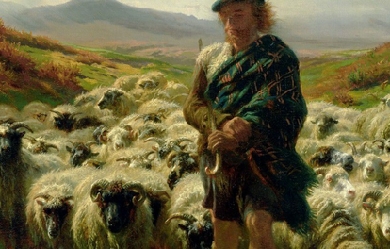
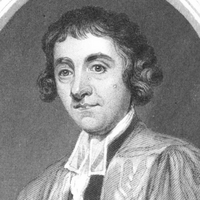
James Beattie FRSE (/ˈbiːti/; 25 October 1735– 18 August 1803) was a Scottish poet, moralist and philosopher. Life James Beattie was born the son of a shopkeeper and small farmer at Laurencekirk in the Mearns, and educated at Marischal College (later part of Aberdeen University), graduating in 1753. In 1760, he was appointed Professor of moral philosophy there as a result of the interest of his intimate friend, Robert Arbuthnot of Haddo. In the following year he published a volume of poems, The Judgment of Paris (1765), which attracted attention. The two works, however, which brought him most fame were An Essay on the Nature and Immutability of Truth, and his poem of The Minstrel. The Essay, intended as an answer to David Hume, had great immediate success, and led to an introduction to the King, a pension of £200, and the degree of LL.D. from Oxford. The first book of The Minstrel was published in 1771 and the second in 1774, and constitutes his true title to remembrance, winning him the praise of Samuel Johnson. It contains much beautiful descriptive writing. Beattie was prominent in arguing against the institution of slavery, notably in his Essay on the Nature and Immutability of Truth (1770) and Elements of Moral Science. Beattie was an amateur cellist and member of the Aberdeen Musical Society. He considered questions of music philosophy in his essay On Poetry and Music (written 1762, published 1776), which was republished several times and translated into French in 1798. His poem “The Hermit” was set to music by Tommaso Giordani (1778). Beattie was co-founder of the Royal Society of Edinburgh in 1783. Beattie underwent much domestic sorrow in the death of his wife, Mary Dunn, whom he had married in 1767, and two promising sons, which broke down his own health and spirits. He died in Aberdeen in 1803 and is buried there in St Nicholas’ Churchyard. Recognition A biographical sketch, An Account of the Life of James Beattie, LL.D., was published in 1804 by Alexander Bower. The poet Robert Burns informed Mrs Frances Dunlop in a letter that the idea of using Coila as the name of his poetic muse first came to him from Beattie’s use of a muse named 'Scota’ in his Scots language poem of 1768 titled To Mr Alexander at Lochlee. Beattie is one of the sixteen Scottish poets and writers depicted on the Scott Monument on Princes Street in Edinburgh. He appears on the left side of the east face. Works * Original Poems and Translations (1760) * The Judgement of Paris (1765) * Poems on Several Subjects (1766) * An Essay on the Nature and Immutability of Truth (1770) * The Minstrel; or, The Progress of Genius (1771/2) two volumes * Essays, on the nature and immutability of truth in opposition to sophistry and scepticism. On poetry and music as they affect the mind. On laughter and ludicrous composition. On the utility of classical learning (1776) * Essays on Poetry (1778) * Scoticisms, Arranged in Alphabetical Order, Designed to Correct Improprieties of Speech and Writing (1779) * Poems on several occasions (1780) * Dissertations Moral and Critical (1783) * The Evidence of the Christian Religion Briefly and Plainly Stated (1786) 2 vols. * The theory of language. Part I. Of the origin and general nature of speech. Part II. Of universal grammar (1788) * Elements of Moral Science (1790–1793) two volumes * The Poetical Works of James Beattie (1831) edited by A. Dyce * The poetical works of Beattie, Blair, and Falconer (1868) edited by Charles Cowden Clarke * James Beattie’s Day-Book, 1773-1778 (1948) edited by R. S. Walker * James Beattie’s Diary (1948) edited by R. S. Walker References Wikipedia—https://en.wikipedia.org/wiki/James_Beattie_(poet)
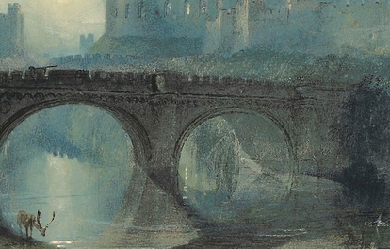
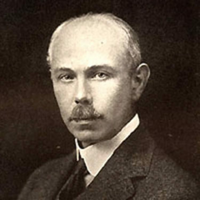
Francis William Bourdillon (22 March 1852 at Runcorn, Cheshire– 13 January 1921 at Buddington, Midhurst) was a British poet and translator. He is known also as bibliophile and scholar. Life Born in Runcorn, Cheshire, he was the eldest son of Rev. Francis Bourdillon, the author, at that time perpetual curate of Runcorn. He was educated at Haileybury College and Worcester College, Oxford, graduating B.A. 1877, M.A. 1882. From 1876 to 1879, he acted as tutor to the sons of Prince Christian of Schleswig-Holstein. Later Bourdillon lived in Eastbourne, and near Midhurst, Sussex. His friends included Audrey Boyle (1853/4–1916), later as wife of Hallam Tennyson, 2nd Baron Tennyson known as Audrey Lady Tennyson. Writer Bourdillon is known for his poetry, and in particular for the single short poem “The Night Has a Thousand Eyes”. He had many collections published, including Among The Flowers, And Other Poems (1878), Minuscula: lyrics of nature, art and love (1897, siftings of three smaller volumes of verse published anonymously at Oxford in 1891, 1892, and 1894), Gerard and Isabel: a Romance in Form of Cantefable (1921), and also Chryseis, and Preludes and Romances (1908). In 1896 he published Nephelé, a romantic novel. He translated Aucassin et Nicolette as Aucassin and Nicolet (1887), and he wrote the scholarly The Early Editions of the Roman de la Rose (1906) as well as Russia Reborn (1917) and various essays which the Religious Tract Society published. Family Bourdillon married Agnes Smyth, and they lived at Buddington, near Midhurst. They had three children. References Wikipedia—https://en.wikipedia.org/wiki/Francis_William_Bourdillon

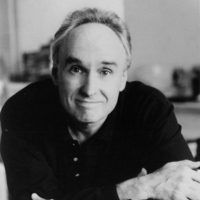
Frank Bidart (born May 27, 1939 in Bakersfield, California) is an American academic and poet, and a three time Pulitzer Prize finalist in poetry. Biography Bidart is a native of California and considered a career in acting or directing when he was young. In 1957, he began to study at the University of California at Riverside, where he was introduced to writers such as T.S. Eliot and Ezra Pound and started to look at poetry as a career path. He then went on to Harvard, where he was a student and friend of Robert Lowell and Elizabeth Bishop. He began studying with Lowell and Reuben Brower in 1962. He has been an English professor at Wellesley College since 1972, and has taught at nearby Brandeis University. He lives in Cambridge, Massachusetts, and he is gay. In his early work, he was noted for his dramatic monologue poems like “Ellen West” which Bidart wrote from the point of view of a woman with an eating disorder and “Herbert White” which he wrote from the point of view of a psychopath. He has also written openly about his family in the style of confessional poetry. He co-edited the Collected Poems of Robert Lowell which was published in 2003 after years of working on the book’s voluminous footnotes with his co-editor David Gewanter. Bidart was the 2007 winner of Yale University’s Bollingen Prize in American Poetry. His chapbook, Music Like Dirt, later included in the collection Star Dust, was a finalist for the 2003 Pulitzer Prize in poetry. His 2013 book “Metaphysical Dog” was a finalist for the National Book Award in Poetry and won the National Book Critics Circle Award. He currently maintains a strong working relationship with actor and fellow poet James Franco, with whom he collaborated during the making of Franco’s short film “Herbert White” (2010), based on Bidart’s poem of the same name. In 2017, Bidart received the Griffin Poetry Prize Lifetime Recognition Award, as well as The National Book Award for Poetry, for his "Half-light: Collected Poems 1965-2016.” Bibliography Poetry * Golden State (1973) * The Book of the Body (1977) * The Sacrifice (1983) * In the Western Night: Collected Poems 1965–90 (1990) * Desire (1997) received the Theodore Roethke Memorial Poetry Prize and the 1998 Bobbitt Prize for Poetry; finalist for the Pulitzer Prize, the National Book Award, and the National Book Critics Circle Award * Music Like Dirt (Sarabande Books, 2002), nominated for the Pulitzer Prize * Star Dust (2005), in two sections * Watching the Spring Festival (2008) * Metaphysical Dog (2013), nominated for the National Book Award in Poetry and winner of the National Book Critics Circle Award * Half-Light: Collected Poems 1965-2016 (2017), winner of the National Book Award in Poetry Other * Editor, with David Gewanter, of Robert Lowell’s Collected Poems (2003) Awards and honors * 1981 The Paris Review’s first Bernard F. Conners Prize for “The War of Vaslav Nijinsky” * 1991 Lila Wallace-Reader’s Digest Foundation Writers’ Award * 1992 Fellow of the American Academy of Arts and Sciences * 1995 Morton Dauwen Zabel Award in Poetry given by the American Academy of Arts and Letters * 1997 Shelley Memorial Award of the Poetry Society of America * 2000 Wallace Stevens Award of The Academy of American Poets; subsequently elected a Chancellor of the Academy (2003) * 2007 Bollingen Prize in American Poetry * 2013 National Book Critics Circle Award (Poetry), winner for Metaphysical Dog * 2013 National Book Award (Poetry), finalist for Metaphysical Dog * 2014 PEN/Voelcker Award for Poetry * 2017 Griffin Poetry Prize Lifetime Recognition Award * 2017 National Book Award in Poetry References Wikipedia—https://en.wikipedia.org/wiki/Frank_Bidart

Everything that I write is about my personal life and things I've been through. I've been writing since I can remember and I won my first poetry contest in second grade and got it published in the school library. The next time, I was in 10th grade and the reason why I entered a contest was to prove that I in fact, did write the poem that was said to be "copywrited" and was offered to be published all over and I declined because I wasn't ready to share with the world, my life! Over the past 18 years I've lost quite a bit of my poetry and stopped writing due to having personal life issues as well as depression of losing my life story in multiple binders. So, less than a year ago I started writing my recent life story, again. So I hope everyone enjoys, the story of my love life over the past several years.
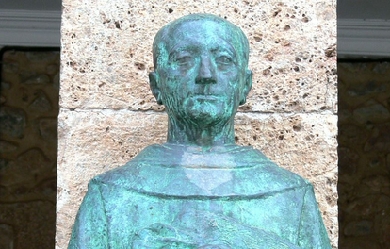
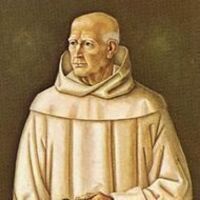
El riojano Gonzalo de Berceo (Berceo, Logroño, hacia 1195 - Monasterio de San Millán de la Cogolla, hacia 1268) se educó en el monasterio de San Millán de la Cogolla ("en Sant Millán de Suso, fue de niñez criado") y llegó a ser un clérigo secular que trabajó primero como diácono (1221) y luego como preste o presbítero (1237), maestro de los novicios y, según Brian Dutton, notario del abad Juan Sánchez en el citado monasterio de San Millán de la Cogolla. Tuvo un hermano que, como él, era también clérigo. Recibió una educación muy esmerada, pues se formó entre 1222 y 1227 en los recientemente creados estudios generales (un antecedente medieval de las modernas universidades) de Palencia, los primeros que hubo en España y fundados por el obispo don Tello Téllez de Meneses que Berceo nombra en sus obras; allí había cuatro cátedras: Teología, Derecho Canónico, Lógica y Artes (gramática), por lo que el futuro poeta recibió una formación novedosa y muy superior a la de los otros eclesiásticos de su mismo nivel. Sin embargo, a principios del siglo XIII, el monasterio de San Millán atravesaba un periodo de decadencia de su antiguo esplendor, que el poeta intentó combatir con sus escritos; debió fallecer ya a mediados el siglo XIII, después de 1264. Berceo fue el más importante representante del mester de clerecía. Depuró el idioma castellano, en su variedad dialectal riojana, para lo cual trasvasó numeroso vocabulario desde el latín (cultismos) y recurrió a fórmulas de la literatura oral tradicional y del mester de juglaría. En su trabajo como notario eclesiástico, y con la intención de paliar la decadencia del monasterio, llegó incluso a falsificar documentos para conseguir que los reacios campesinos pagaran sus contribuciones al mismo. Sus obras narrativas y didácticas en verso tratan siempre sobre tema religioso, y están constituidas fundamentalmente por hagiografías, esto es, biografías de los santos, en especial aquellos a los que se rendía culto en los monasterios con los que estuvo vinculado: la Estoria de sennor San Millán, la Vida de Sancta Oria, virgen y La vida del glorioso confesor Santo Domingo de Silos, por ejemplo. Su obra maestra es, sin embargo, los Milagros de Nuestra Señora. Otras obras suyas son El duelo que fizo la Virgen María el día de la Pasión de su fijo Jesu Cristo, Del sacrificio de la Misa, De los signos que aparecerán ante del Juicio, el Martiryo de Sant Laurencio, los Loores de Nuestra Señora y tres Himnos, dedicados a Jesús, el Espíritu Santo y la Virgen. No se muestra como un narrador original, ya que traduce ampliando obras escritas anteriormente en latín (amplificatio); su originalidad y carácter artístico debe apreciarse en el tratamiento de los temas, en el estilo, los detalles costumbristas y adaptaciones a la mentalidad medieval y campesina que añade a dichos relatos. El ámbito de creación de su obra es culto, aunque se reviste de una apariencia popular y utiliza elementos tradicionales; la estrofa que emplea para la versificación es la cuaderna vía o tetrástrofo monorrimo: cuatro versos alejandrinos o de catorce sílabas separados cada uno en dos mitades de siete sílabas por una cesura que coincide con final de palabra y grupo fónico, impidiendo toda sinalefa, y con una única rima consonante en todos sus versos. Sus obras se pueden dividir en tres grupos: * Obras sobre la Virgen María: Loores de Nuestra Señora, Duelo que fizo la Virgen y Milagros de Nuestra Señora. * Vidas de santos: Vida de San Millán, Vida de Santo Domingo de Silos, Poema de Santa Oria y Martirio de San Lorenzo. * Obras doctrinales: De los signos que aparecen antes del Juicio Final y Del sacrificio de la misa. Milagros de Nuestra Señora Comienza con una introducción alegórica en la que el autor se presenta a sí mismo en una naturaleza idealizada, descanso del hombre, que simboliza las virtudes y perfecciones de la Virgen. A continuación, se suceden veinticinco milagros realizados por la Virgen a favor de personas que sienten una gran devoción por ella. Berceo no inventa, sólo pretende difundir en lengua romance los relatos ya existentes sobre la Virgen, los cuales él modifica con libertad. Las principales características de los Milagros son las siguientes: * Berceo introduce elementos cotidianos para atraer a sus oyentes. * Emplea elementos del arte juglaresco, como el uso de expresiones para llamar la atención de sus oyentes. * Al final de cada relato aparece una moraleja o enseñanza para hacer comprender al oyente las ventajas que reporta ser un devoto de la Virgen. Se pueden distinguir tres grupos de milagros: * En los que María premia o castiga a los hombres, como "La casulla de San Ildefonso". * En los que la Virgen perdona y logra salvar de la condenación a sus devotos, como "El sacristán impúdico". * En los que los personajes sufren una crisis espiritual y María les ayuda a solucionar el conflicto, como "La abadesa encinta”. Gonzalo de Berceo y el euskera Antiguamente, aparte del castellano se conocía el euskera en La Rioja Alta, y por eso Gonzalo de Berceo, uno de los primeros escritores en lengua española utilizaba palabras vascas como beldur 'miedo' ("Don Beldur"), gabe 'sin' o 'privado de'; o çatico que viene del euskera zatiko 'pedacito', entre otras más. Referencias Wikipedia - http://es.wikipedia.org/wiki/Gonzalo_de_Berceo
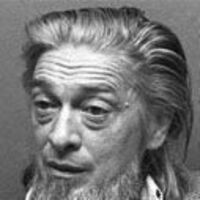
Carlos Barral y Agesta, (Barcelona, 1928 - Barcelona, 12 de diciembre de 1989), poeta, memorialista, editor y senador1 español nacido en Barcelona. Licenciado en Derecho por la Universidad de Barcelona en 1950, fue Alma mater, junto a Jaime Gil de Biedma, de la generación literaria de los 50. Es el poeta más complejo de la generación (José Agustín Goytisolo, Gabriel Ferrater, etc.) y el que consigue unos juegos del lenguaje más elevados. Escribió tres volúmenes de memorias que son un hito del género en español. Casado con Yvonne Hortet, mujer perteneciente a la alta burguesía barcelonesa, tuvo cinco hijos (la traductora, ilustradora y empresaria Dánae Barral, el escultor Dario Barral, Marco, Alexis e Yvonne), su vida estuvo fuertemente ligada al mar y a la localidad costera tarragonesa de Calafell, donde residía largas temporadas. Al asumir la jefatura de la editorial Seix Barral, empresa familiar de libros de texto fundada por sus padres en 1911, le imprimió una dirección que le llevó a ser la referencia literaria de todo el mundo hispano editando clásicos de la cultura progresista de los cincuenta, sesenta y setenta. Creó un premio de edición a escala internacional, el Formentor, el Biblioteca Breve y el premio Barral de novela, y fue uno de los artífices del boom latinoamericano y dio a conocer a autores como Juan Marsé, Mario Vargas Llosa, Alfredo Bryce Echenique o Julio Cortázar. Aficionado a la vela, y de salud delicada, fue además senador por Tarragona en 1982 y parlamentario europeo por el PSC-PSOE. En 1988 obtuvo el Premio Comillas de Tusquets Editores en la categoría de Memorias por Cuando las horas veloces. Murió en Barcelona en 1989. Escribió treinta años de Diarios y mantuvo correspondencia, entre otros, con Max Aub, María Zambrano, Camilo José Cela, Miguel Delibes, Gonzalo Torrente Ballester, Vicente Aleixandre, Caballero Bonald, Alfredo Bryce Echenique, Giulio Einaudi, Alberto Oliart, Jaime Gil de Biedma, Jaime Salinas Bonmatí y los presos políticos de Burgos. Su archivo se encuentra depositado en la Biblioteca de Cataluña. Obra * Tuvo varios poemas relevantes en la década de los 60, como vemos posteriormente. Lírica * Las aguas reiteradas (1952) * Metropolitano (1957) * Diecinueve figuras de mi historia civil (1961) * Usuras (1965) * Figuración y fuga (1966) * Informe personal sobre el alba (1970) * Usuras y figuraciones (1973) * Lecciones de cosas: Veinte poemas para el nieto Malcolm (1986) * Antología poética (1989) * Poesía completa (1998) Artículos periodísticos * Observaciones a la mina de plomo, Barcelona: Lumen, 2002. Libros de fotografías * Catalunya des del mar (1982) * Catalunya a vol d'ocell (1985)ç Memorias * Años de penitencia (1975) * Los años sin excusa (1978) * Cuando las horas veloces (1988) * Memorias; prólogos de José María Castellet y Alberto Oliart, Barcelona: Península, 2001 (edición completa de los libros anteriores) * Los diarios / 1957-1989 (1993) * Almanaque (1999, entrevistas completas). * Memorias de infancia, incompletas e inéditas. Novela * Penúltimos castigos (1983, novela autobiográfica). * El azul del infierno (novela incompleta e inédita sobre el cuadro El paso de la laguna Estigia de Patinir). Traducciones Rainer María Rilke, Sonetos a Orfeo. Filmografía En 2010 el director Sigfrid Monleón dirige la película El cónsul de Sodoma, en donde el escritor (interpretado por Josep Linuesa) conoce al poeta Jaime Gil de Biedma. referencias Wikipedia-http://es.wikipedia.org/wiki/Carlos_Barral
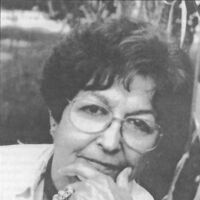
Amanda Berenguer (24 de junio de 1921, Montevideo - 13 de julio de 2010, idem.) fue una poetisa uruguaya. Académica de Honor de la Academia Nacional de Letras del Uruguay (2006). Miembro de la generación del 45. Casada en 1944 con el escritor José Pedro Díaz. En 1986 recibe el premio "Reencuentro de Poesía" organizado por la Universidad de la República por "Los signos sobre la mesa. Ante mis hermanos supliciados". La dama de Elche (1987) recibe el primer premio en la categoría Poesía del Ministerio de Educación y Cultura de Uruguay. Municipal de Montevideo. La segunda edición de La dama de Elche, en 1990, recibe el Premio Bartolomé Hidalgo, que entrega la Cámara Uruguaya del Libro de Uruguay.
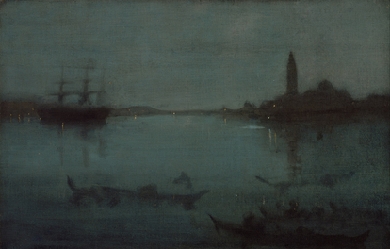
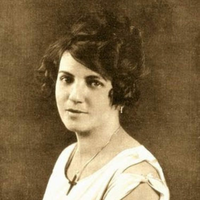
Emilia Bernal Agüero (Nuevitas, 8 de mayo de 1882 – 1964) fue una poetisa cubana, que también cultivó otros géneros como el ensayo, la traducción y la novela autobiográfica. Nació y se crio en Nuevitas (provincia de Camagüey), donde su madre era maestra. A raíz de la guerra de 1895 la familia emigró brevemente a Santo Domingo, pero pronto regresó a Cuba, donde pasaron a vivir en La Habana. Allí comenzó a darse a conocer colaborando con diversos periódico. Pasó la mayor parte de su vida en el extranjero, viajando por América y Europa. En España, pasó por la Residencia de Estudiantes y viajó hasta Granada donde conoció a Manuel de Falla. Tuvo una relación con el mallorquín Llorenç Villalonga, a quien inspiró obras que reflejaban las diferencias de edad y de formación entre ambos escritores.

Grew up on a little gem in the Caribbean, a tourist attraction the eyes never misses. There I had my education, primary through college. Life has always been a challenge but with God I keep climbing, and my dreams are slowing becoming. Writer, teacher, website owner of https://www.livingtoreachacme.com/ and more. Always loved poetry. I dreamed of poetry, tried but never thought I was good enough. Today, I am here, I stand only by the Grace of God. He is just so awesome!!!!
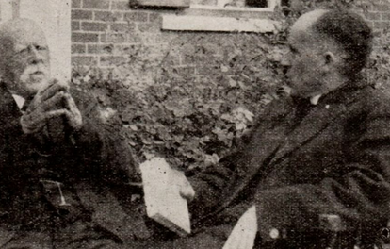
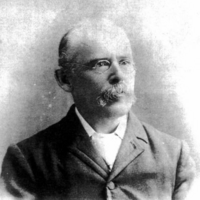
Charles-Nérée Beauchemin (1850-1931) est un écrivain et médecin québécois. Il a écrit un magnifique poème intitulé Fleur d'Aurore: En voici un extrait: « Ensemble nous irons encore Cueillir dans les prés, au matin De ces bouquets couleur d'aurore Qui fleurent la rose et le thym... » Biographie Charles-Nérée Beauchemin naît le 20 février 1850 à Yamachiche, au Québec. Fils de Hyacinthe Beauchemin, un médecin, et d'Elzire Richer-Laflèche, il est lié, du côté de sa mère, à Monseigneur Laflèche, le 2e évêque de Trois-Rivières, à sir Lomer Gouin, ancien Premier Ministre de la province du Québec et à l'ancien gouverneur de l'État de Rhode Island, Aram Pothier. Il poursuit ses études au séminaire de Nicolet de 1863 à 1870 et à l'Université Laval de 1870 à 1874. Dans le premier cas, pour suivre des études classiques, dans le deuxième, pour suivre des études médicales. Après avoir reçu son diplôme, il s'établit à Yamachiche, où il passe le restant de sa vie. Là, il publie ses vers dans les journaux et les revues du temps et commence sa carrière en écriture. En 1878, il se marie à l'âge de 28 ans avec Anna Lacerte, fille d'un ancien député du comté de Saint-Maurice. Avec elle, il élève 5 garçons et 5 filles. Il est reconnu d'avoir eu des amitiés avec de grands poètes, tels Louis-Honoré Fréchette et Pamphile Lemay. Nérée Beauchemin publie son premier recueil, Les Floraisons matutinales, en 1897, avant son 47e anniversaire. Son confident, l'Abbé Albert Tessier, le persuade de publier ses poèmes inédits en un deuxième recueil. En 1928, Nérée Beauchemin publie Patrie intime. Il reçoit plusieurs diplômes. En 1888, il reçoit, de la part de la Société Royale du Canada, un diplôme d'honneur, et un diplôme de maîtrise en 1928 dans les jeux florimontains. Au 11 novembre 1928, il reçoit le Grand Prix d'apostolat laïque par la poésie et un doctorat dans les lettres de Laval. Il accepte, le 13 septembre 1930, la médaille de l'Académie française. Il meurt à Yamachiche le 29 juin 1931 à 81 ans. Le 22 octobre 1950, la Société Royale et l'Académie canadienne-française se font représenter aux cérémonies d'hommage de Yamachiche, où les villageois célèbrent le 100e anniversaire du poète. La même année, avec une étude-préface de Clément Marchand, Choix de poésies de Nérée Beauchemin se fait publier posthumément. Au 4 janvier 1952, Yamachiche rend un dernier hommage au poète en se donnant une rue Nérée Beauchemin. Trois-Rivières accomplit le même hommage en mémoire de Beauchemin. Aujourd'hui, il est considéré comme un des premiers écrivains du terroir. Les références Wikipedia – https://fr.wikipedia.org/wiki/Nérée_Beauchemin

raised by an amazing woman In Iowa.by the age of 38 I had lost my mother and father, my brother and sister, my half sister. I have dealt with alcoholism, drug addiction, cancer, HIV, suicide, and being gay. now 45 years old I find comfort and healing in my poetry writing.in spite of all my hardships I feel that I have a great attitude all due to the wonderful Mother who raised me.
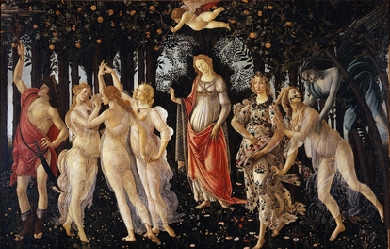
Giovanni Boccaccio (Certaldo o forse Firenze, giugno o luglio 1313 – Certaldo, 21 dicembre 1375) è stato uno scrittore e poeta italiano. Conosciuto anche come "il Certaldese", fu una delle figure più importanti nel panorama letterario europeo del XIV secolo. Alcuni studiosi (tra i quali Vittore Branca) lo definiscono come il maggior prosatore europeo del suo tempo, uno scrittore versatile che amalgamò tendenze e generi letterari diversi facendoli confluire in opere originali, grazie a un'attività creativa esercitata all'insegna dello sperimentalismo. La sua opera più celebre è il Decameron, raccolta di novelle che nei secoli successivi fu elemento determinante per la tradizione letteraria italiana, soprattutto dopo che nel XVI secolo Pietro Bembo elevò lo stile boccacciano a modello della prosa italiana. L'influenza delle opere di Boccaccio non si limitò al panorama culturale italiano ma si estese al resto dell'Europa, esercitando influsso su autori come Geoffrey Chaucer, figura chiave della letteratura inglese, o più tardi su Miguel de Cervantes, Lope de Vega e il teatro classico spagnolo.









